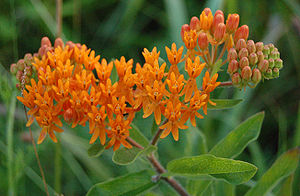[amazon_link asins=’B001VGTTRW,B00IZ0MDNE,B0764LT1WS,B00IZ0MFAK,B072MQMQXC,B00L8BGNP6′ template=’ProductCarousel’ store=’finmeacur-20′ marketplace=’US’ link_id=’50a2b925-c1cc-11e7-b609-054b5a42b438′]
Botanical Name :Apocynum cannabinum
Family: Apocynaceae
Genus: Apocynum
Species: A. cannabinum
Kingdom: Plantae
Division: Magnoliophyta
Class: Magnoliopsida
Order: Gentianales
Common Names:Dogbane,Canadian Hemp, Amy Root, Hemp Dogbane, Indian Hemp, Rheumatism Root, or Wild Cotton
Habitat :Apocynum cannabinum is native to California and is also found elsewhere in North America and beyond. It grows in open wooded areas, ditches, and hillsides, and prefers moist places.
Description:
Apocynum cannabinum, a dicot, is a perennial herb. It grows up to 2 meters/6 feet tall. The stems are lack hairs, often have a reddish-brown tint when mature, become woody at the base, and are much-branched in the upper portions of the plant. are reddish and contain a milky latex capable of causing skin blisters. The flowers are produced in mid summer, with large sepals, and a five-lobed white corolla.
Leaves: Entire margins (meaning the leaf’s edges are smooth, not notched or toothed), ovate or elliptic, 2-5 inches long, 0.5-1.5 inches wide, and arranged oppositely along the stem. Leaves have short petioles (stems) and are sparingly pubescent or lacking hairs beneath. The lower leaves have stems while the upper leaves may not. The leaves turn yellow in the fall, then drop off.
Fruit: Long (5 inches or more), narrow follicles produced in pairs (one from each ovary) that turn reddish-brown when mature and develop into two long pods containing numerous seed with tufts of silky white hairs at their ends.
Identifying Characteristics: Stems and leaves secrete a milky sap when broken. Sprouts emerging from the underground horizontal rootstock may be confused with Common Milkweed (Asclepias syriaca) emerging shoots. But note that they are not related to milkweeds, despite the milky sap and the similar leaf shape and growth habit. The flower shape is quite unlike that of milkweed flowers and the leaves of hemp dogbane are much smaller than those of common milkweed. When mature, these native plants may be distinguished by the branching in the upper portions of the plant that occurs in hemp dogbane, and also the smaller size of hemp dogbane compared to Common milkweed.
Medicinal Uses:
Indian hemp is an unpleasantly bitter stimulant irritant herb that acts on the heart, respiratory and urinary systems, and also on the uterus. It was much employed by various native North American Indian tribes who used it to treat a wide variety of complaints including rheumatism, coughs, pox, whooping cough, asthma, internal parasites, diarrhea and also to increase milk flow in lactating mothers. The fresh root is the most active part medicinally. It has been used in the treatment of syphilis and as a tonic. A weak tea made from the dried root has been used for cardiac diseases. A tea made from the root has been used as a vermifuge. The milky sap is a folk remedy for venereal warts. It is favored for the treatment of amenorrhea and leucorrhea. It is also of value for its diaphoretic and emetic properties. A half-ounce of crushed root was boiled in a pint of water and one or two ounces of the decoction administered several times a day as a laxative. The powered root was used to induce vomiting. The entire plant, steeped in water, was used to treat intestinal worms, fever, dysentery, asthma, pneumonia, inflammation of the intestines, and indigestion. The plant is considered a heart stimulant.
This plant causes large and liquid stools, accompanied by but little griping; acts with more or less freedom upon the kidneys; and in large doses produces much nausea, and rather copious vomiting. Emesis from its use is followed by rather free perspiration, as is to be expected from any emetic; though this agent also acts considerably upon the surface. The pulse becomes softer and fuller under its use; and it is accused of producing drowsiness and a semi-narcotism. It has been most used for its effects as a hydrogogue cathartic and diuretic in dropsies; but should be employed only in moderation, and in connection with tonics and diffusive stimulants. It usually increases the menstrual flow, and some have lately attributed decided antiperiodic properties to it, but this is not yet satisfactorily confirmed. An ounce of the root boiled a few minutes in a pint of water, is the better mode of preparing it; and from one to two fluid ounces of this are a laxative dose. An extract is made, of which the dose is from three to six grains.
It is also used in herbal medicine to treat syphilis, rheumatism, intestinal worms, fever, asthma, and dysentery. Although the toxins from the plant can cause nausea and catharsis, it has also been used for slowing the pulse.
Other Uses:
Phytoremediation
Apocynum cannabinum is a phytoremediation plant, a hyperaccumulator used to sequester lead in its biomass.
Fiber
Apocynum cannabinum was used as a source of fiber by Native Americans, to make hunting nets, fishing lines, clothing, and twine. It is called qéemu in Nez Perce and in Sahaptin.
Disclaimer:
The information presented herein is intended for educational purposes only. Individual results may vary, and before using any supplements, it is always advisable to consult with your own health care provider.
Resources:
http://www.primitiveways.com/hemp_dogbane.html
http://www.herbnet.com/Herb%20Uses_C.htm
http://www.calflora.org/cgi-bin/species_query.cgi?where-calrecnum=426
http://en.wikipedia.org/wiki/Apocynum_cannabinum
Related articles
- Ranunculus sceleratus (findmeacure.com)
- Blue Camas (findmeacure.com)
- Bulbous Buttercup (findmeacure.com)
- Balsamorhiza sagittata (findmeacure.com)
- Buffalo gourd (findmeacure.com)
- The RHS Plant for Bugs project (telegraph.co.uk)
















